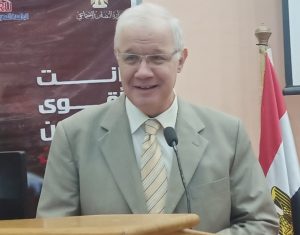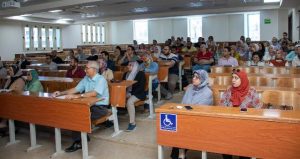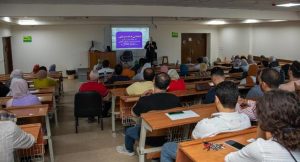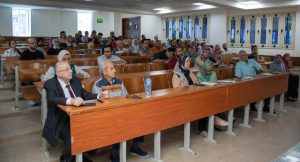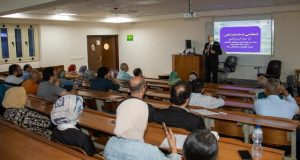Scientific seminars at the Egyptian Russian University on “Scientific Research from Standardization to Creativity”
“Benefiting from the Outputs of Scientific Research”
Dr. Sherif Fahkry Mohamed Abdel Nabi, President of the Egyptian Russian University, announced that based on the university’s creative role, and the belief in the great role of universities in achieving intellectual progress and leading development, progress and comprehensive renaissance in society, seminars are held periodically in all fields within the university campus, and that within this framework and in line with the strategic direction of Egyptian universities, and in an effort to achieve the university’s strategy to create a unique academic environment capable of positive influence, the university organizes many scientific seminars. The university president also stressed that the university encourages its students and faculty members to innovate and entrepreneurship, as it supports promising ideas and projects and provides the appropriate environment to develop the skills and creativity of entrepreneurs. These important activities in the field of innovation come with the support of Dr. Mohamed Kamal El-Sayed Mustafa, Chairman of the Board of Trustees of the university, with the aim of enhancing the spirit of entrepreneurship among students and researchers, and motivating them to transform their ideas into successful commercial projects, with the university providing support and infrastructure to achieve this.
In this context, Dr. Essam Khamis, Advisor to the President of the Egyptian Russian University for Academic Development, gave a public lecture to students and researchers at the university’s Entrepreneurship Club entitled “Scientific Research from Standard to Creativity, support Companies, Companies, Science and Technology Valleys”, as part of the activities of the Egyptian Russian University’s Startup companies Olympiad. The lecture addressed the mechanism of transformation into a productive university, applying the concept of “from standard to creativity”, explaining how to move from standard academic research to creative research. By presenting a model of transformation from academic research to applied research that results in patents, and how to transform these innovations into laboratory and then industrial prototypes, leading to their development and transformation into industrial products based on scientific research. To achieve this model, Dr. Essam Khamis explained that technological support of various types and science and technology disciplines are used to help narrow the gap between universities and industry with the aim of reaching a “knowledge economy and a knowledge-based economy”, and explaining the difference between them. The “knowledge economy” is related to the economics of knowledge processes themselves, such as knowledge production and manufacturing, research and development processes, including research and development costs, business management, consulting, and the preparation and training of experts, in addition to the outcome resulting from these processes as economic. As for the “knowledge-based economy”, knowledge plays a lesser role, as growth is driven by traditional factors of production and the relative contribution of complementary knowledge-based industries, such as qualified and highly skilled human resources, or human capital, which is considered one of the most valuable assets in this economy. He pointed out that the Egyptian Russian University embraces technology entrepreneurs and innovators through the Entrepreneurship Club, where it provides them with financial and technical support, training, feasibility studies, and registration facilities, enabling innovators and entrepreneurs to transform their ideas into prototypes and semi-industrial outputs, leading to the establishment of successful technology startups. Dr. Essam reviewed a set of prototypes for various research outputs that can be manufactured as products under the Science, Technology and Innovation Incentives Law and its executive regulations issued in 2019. He also discussed the types of commercial companies, explaining the difference between startup companies and spin-off companies. He explained that startup companies are usually established in industrial areas, while spin-off companies are established within the university’s science park, to benefit from the university’s human capabilities of faculty members, and material capabilities such as laboratory facilities and the library, which enables it to continue to produce more technological industrial products in various fields of the university. He concluded the lecture by highlighting the science and technology parks (STP), explaining the concept of the Triple Helix model for innovation, which consists of a set of interactions between the university, industry and government to enhance economic and social development to achieve the concept of the knowledge economy and knowledge society. He pointed out that this model has evolved to become Quadruple Helix after adding non-profit institutions. He also spoke in details about examples of global science and technology fields in China, Japan, Tunisia and others, reviewing the number of global science fields and the development of their establishment during each decade, as the first of them was launched in 1950. He added that China topped the world in the number of science parks, followed by the United States, then the United Kingdom, then France.
Dr. Essam Khamis also gave another public lecture at the Faculty of Pharmacy at the university entitled “Benefiting from the Outputs of Scientific Research”, in the presence of Dr. Ihab Fattouh, Dean of the Faculty of Pharmacy, and a group of faculty members, assistants and students from the Faculties of Pharmacy and Engineering. The lecture included an explanation of the higher education and scientific research system in Egypt and the current status of science and technology indicators. Dr. Essam reviewed Egyptian higher education institutions and research centers affiliated with the Ministry of Higher Education and Scientific Research and research centers affiliated with various ministries and state agencies. He touched on the outputs of various applied scientific research, such as research published in globally indexed journals, intellectual property, patents, technical knowledge, laboratory and industrial prototypes, and the results of research, consultations and services based on innovation.
He pointed out that scientific publishing in Egypt increased by 11.46% in 2022 compared to 2021, as the publishing rate in 2023 reached about 42,219 research papers, representing about 9% of Egypt’s total publications since 1891, which amounted to 450,206 research papers. He stressed that this is a real research boom credited to the Ministry of Higher Education and Scientific Research. He added that Egypt ranked 25th globally in the field of internationally published scientific research out of 234 countries in 2023, making it among the top 10.7% of countries according to the global SIMAGO databases. He spoke in details about the reasons for the renaissance of scientific research in Egypt in terms of quantity and quality. The lecture witnessed lively interaction and discussion from the attendees, as Dr. Essam answered their inquiries.
